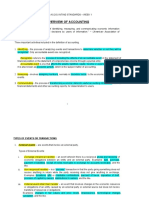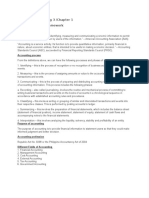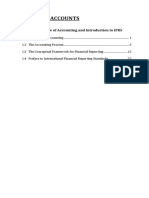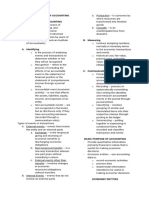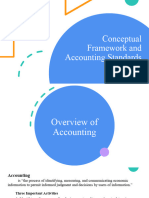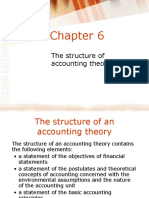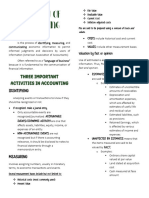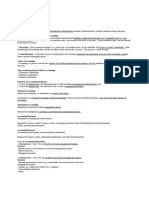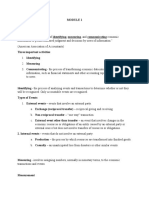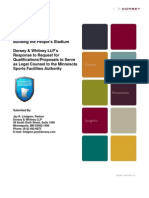0% found this document useful (0 votes)
112 views7 pagesFinone: Cost or Current Repurchase Price) Undiscounted Amount of
This document provides an overview of accounting concepts and principles. It discusses the key steps in the accounting process including identifying, recognizing, measuring, and communicating economic information. It also describes the different types of events that are accounted for, various measurement bases, and the different types of quantitative, qualitative, and financial information provided by accounting. Finally, it outlines important accounting theories, postulates, and concepts such as materiality, consistency, and accrual basis of accounting.
Uploaded by
Stephanie Queen OcampoCopyright
© © All Rights Reserved
We take content rights seriously. If you suspect this is your content, claim it here.
Available Formats
Download as PDF, TXT or read online on Scribd
0% found this document useful (0 votes)
112 views7 pagesFinone: Cost or Current Repurchase Price) Undiscounted Amount of
This document provides an overview of accounting concepts and principles. It discusses the key steps in the accounting process including identifying, recognizing, measuring, and communicating economic information. It also describes the different types of events that are accounted for, various measurement bases, and the different types of quantitative, qualitative, and financial information provided by accounting. Finally, it outlines important accounting theories, postulates, and concepts such as materiality, consistency, and accrual basis of accounting.
Uploaded by
Stephanie Queen OcampoCopyright
© © All Rights Reserved
We take content rights seriously. If you suspect this is your content, claim it here.
Available Formats
Download as PDF, TXT or read online on Scribd
/ 7

